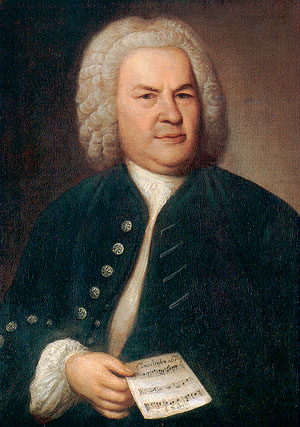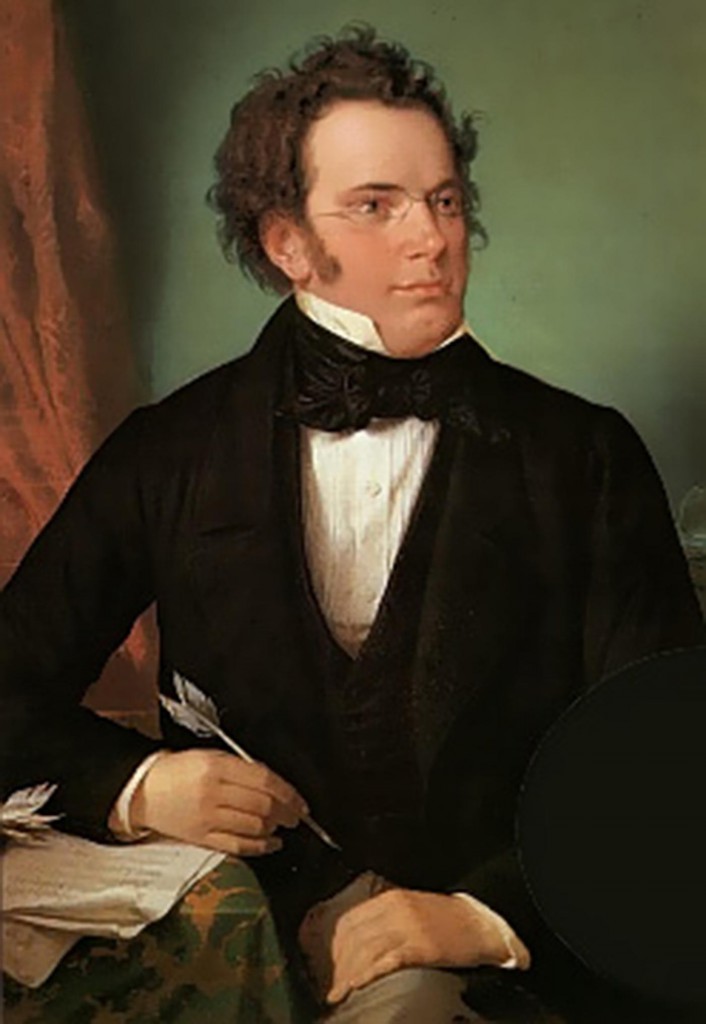The Henle blogging community will, we hope, not be disappointed that my text today has, at first glance, nothing to do with the daily Henle editing routine. Normally, we report here about tricky editorial problems and offer solutions. But today – not a sign of solving anything. My posting is a question, almost a cry for help on a topic that has been bothering me for weeks. But let’s start with a domestic scene.
A few weeks ago when I was cleaning up my stack of CDs at home, I came across a recording by Alfred Brendel, “Brendel plays Bach”. Elated at the rediscovery, I immediately listened to it straight through – and got a real high in the end. Not only from Brendel, but also from Bach. For concluding the repertoire is the Prelude and Fugue in A minor BWV 904, a work (I must confess) that was completely unknown to me. What a find! Over the next hour, I kept listening to it, reading the score and looking for other postings on YouTube, including this one, wanting to know if the music is so stunning on the harpsichord as well. I only came to myself again when my partner, who happened to be observing my Bach enthusiasm, brought me back to reality by saying, ‘But that’s Schubert!’
First of all, total incomprehension on my side. But gradually I got the feeling of having heard the fugue subject before in a very different context. Neither of us, though, was able to pinpoint the parallel. Only much later did it dawn on us: the fugue subject is strikingly similar to the opening of Schubert’s Arpeggione sonata! Or vice versa: the sonata’s first theme in the first movement literally seems to quote Bach’s fugue subject. This is how the music text looks:
Especially characteristic at the head of Bach’s subject is the alternating leaps of a fifth—sixth—fifth, a1–e2–a1–f2–a1–e2. And it was just this “gesture” that made the connection to the Arpeggione theme in our musical memories. The same tonal sequence in Schubert’s theme, harmonised here in a minor / d minor / a minor, produces the particular colour, the movement’s characteristic inflection.
But not only does the intervallic constellation fifth / sixth / fifth match up, but even the pitches do, thus also the key of A minor and beyond that also the first 4 notes of both themes. The first leap a1–e2 in Bach’s subject (measure 1) is solely filled in with Schubert’s passing notes (b1–c2–d2).
Deliberate allusion or a coincidence? I myself am not certain. Usually, I’m very sceptical about attempts to surmise profoundly similar quotations from random motif matches. Aren’t these often about ‘universal applications’, musical ‘everyday vocabulary’ that you must compellingly find in countless compositions if only you select the right section? Isn’t that also the case here? Then again, isn’t the matching up going so far that you can hardly speak of coincidence? Especially since both motifs are so prominent at the opening of each piece?
I’ve already warned you in advance that I don’t have an answer. But to find an answer, we would first of all have to settle another, indeed decisive matter: Can Schubert possibly even have known the Bach fugue? (And now it’s finally time for sources!)
I would have said ‘No’ spontaneously. Bach’s fugue first appeared in print posthumously, in 1839, in fact, within the context of Czerny’s Bach edition for the ‘Bureau de Musique de C. F. Peters’. Schubert had already died in 1828 and would consequently have been able to become acquainted with the fugue only from a manuscript copy (Bach’s autograph is not extant). But around 1824, the compositional date of the Arpeggione sonata (see preface to HN 611 and 612), were there copies of Bach works circulating in Vienna, which Schubert could have looked at?
This time the answer is ‘Yes’! We know that even before 1800, Bach was being cultivated in Vienna, led by such personages as Gottfried van Swieten or Gottlieb Muffat. Around 1800 we can even speak of a Viennese Bach renaissance, a renaissance much less known than its counterpart in Berlin (keyword: Mendelssohn Bartholdy and the revival of the St Matthew Passion in 1829). Ironically, an important source of the BWV 904 fugue has a definite Vienna connection. It contains only the fugue and the source was perhaps in the possession of Gottfried van Swieten and/or Gottlieb Muffat. At any rate, the famous Viennese autograph collector Aloys Fuchs is known to have owned the manuscript in 1837 at the latest. Fuchs, in turn, can be associated with Franz Schubert: Fuchs took part in the so-called Schubertiades in Ignaz von Sonnleithner’s salon; he is also said to have participated in the first performance of the vocal quartet ‘Der Gondelfahrer’ D 809 on 17 November 1825 in the Vienna Musikverein. There would certainly have been ways that Schubert could have gotten to know Bach’s fugue ca. 1824, at the time the Arpeggione sonata was composed.
Perhaps Vinzenz Schuster, for whom Schubert composed the Arpeggione sonata, who likewise socialised at Sonnleithner’s salon and was the owner of an Antiquar-Musikalienhandlung [antiquarian music business] and a Musik-Leih- u. Copir-Anstalt [music lending and copying establishment], played a role as a Bach intermediary? Was the theme borrowing perhaps a kind of “insider” exchange between Schuster and Schubert?
All this is, unfortunately, speculation; overall the evidence is weak. Nevertheless, I would like to put my find up for discussion to the blog readers. What do you think? Is this a quote? Can it even be one? Have I overlooked something? Has the matter perhaps already been far too much gone over – and I don’t know that? You see me at a loss, but I am grateful for any clue! (Knowing well that the fugue does not need the Arpeggione sonata and vice versa to succeed….)






While I share your skepticism regarding most such musical “quotation”, the fact that the Schubert and Bach share the same key lends support for your theory. In my experience, authentic quotation most often retains the original key. For example, Chopin’s Impromptu no. 4 in C-sharp minor quotes from Beethoven’s Sonata op. 27 no. 2 in C-Sharp minor. Many pieces have been influenced by pieces in the same key from Bach’s Well-tempered Clavier; for example, Chopin’s Etude op. 10 no. 1 in C major. Brahms’ Intermezzo op. 76 no. 7 in A minor, is almost a meditation on Beethoven’s Für Elise also in A minor etc. It would seem that tonality is a very important factor in musical conscious and unconscious reminiscence.
Seems like a figure you might hum while tending the garden….
Moments musicaux, D. 780 (op. 94) 1823-1828: 4 cis-Moll. Moderato. Comment from German Wikipedia: “Im vierten Stück (Moderato) werden klar Anklänge an Bach deutlich, mit dessen Werk sich Schubert vor allem in der Entstehungszeit stark beschäftigt hat. Eine latente Zweistimmigkeit im A-Teil, ganz ähnlich der im c-Moll-Präludium aus dem ersten Band des Wohltemperierten Klaviers, ist deutlich erkennbar.” https://de.wikipedia.org/wiki/Moments_musicaux_(Schubert)
Sometimes people can unsuspectingly recall a melody when they think they are creating it. But, likely, Schubert heard the melody at some point given there was some interest in Bach in Vienna as you have pointed out. The key of A minor seems to clinch the notion that he may have seen the manuscript even, but musicians of the day would often copy other peoples music by hand and if they didn’t title it, Schubert may not known of it’s origin.
Interesting, but I’m sceptical too. While there are undoubted similarities between the pitches in the two melodies, important notes appear at different places in the metrical pattern. The return to the tonic in Schubert’s second bar is accented and prolonged, a significant difference to the passing reference as a decorative figure in Bach’s bar 1. It really alters the overall structure of the phrase.
Thank you for the fascinating post. The evidence is weak… but compelling.